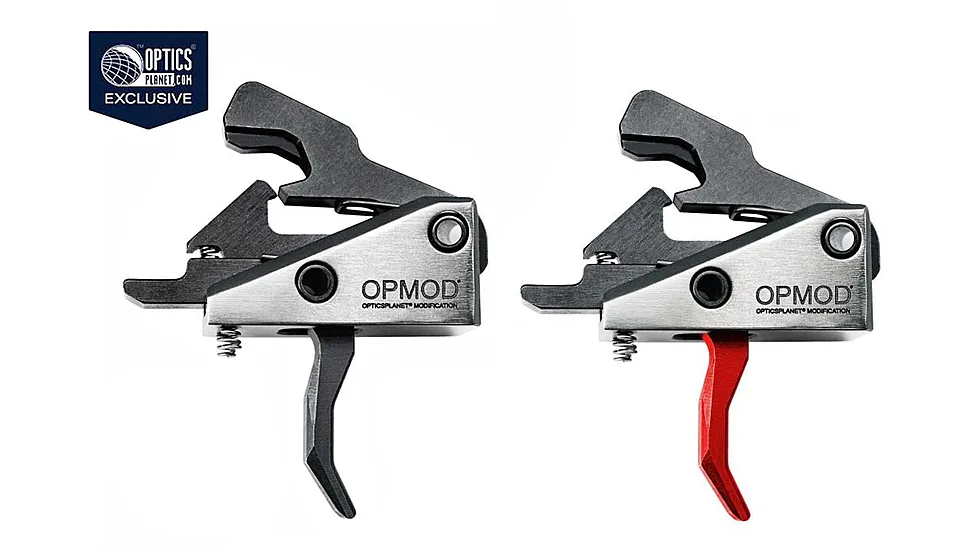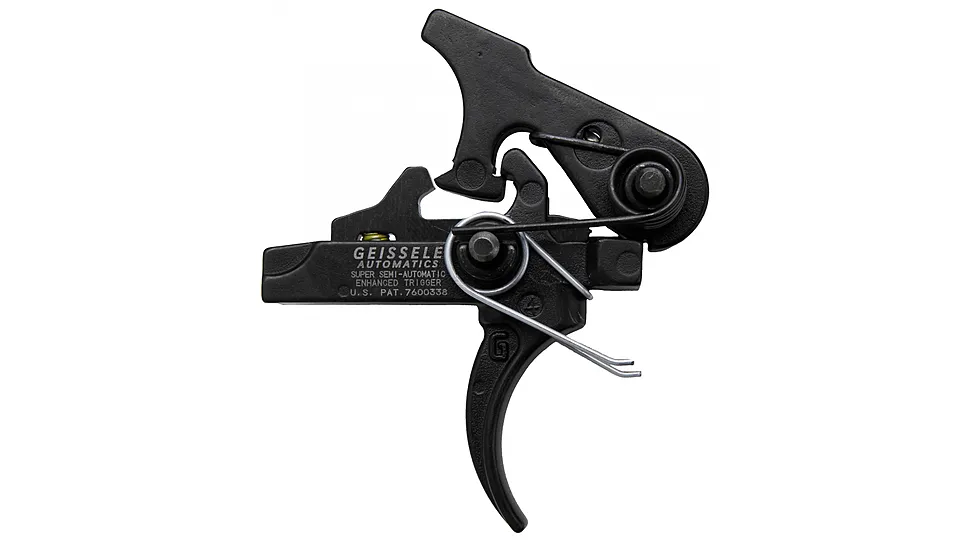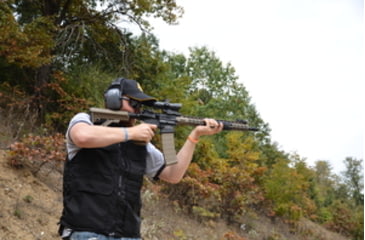Whether you're new to the world of AR15s and rifles modeled after this platform or you're an experienced shooter with some building experience behind you, there are still some technical details that you might not be aware of. One of the most common upgrades to a factory AR15 is installing a new rifle trigger, as this is a simple process that almost anyone can do, especially if they purchase a drop-in trigger. These triggers are available in a wide variety of shapes, sizes, pull weights, and more, but they are most often broken down into two categories: two stage and single stage triggers. If you're looking to upgrade your rifle or build one up from scratch, understanding the differences between the two trigger designs ensures you're happy with the final outcome and the trigger serves your needs well.![]()
What Is a Single Stage Trigger?
 A single stage trigger refers to a rifle trigger that has a single, continuous pull throughout the entire process of firing a round. This means the required pull weight of the trigger remains constant until the trigger "breaks" which is when the firing pin is engaged and a round is fired. Because you are required to exert constant, even energy, a single stage trigger often has a much lower pull weight than other varieties. Having a pull weight between 2 and 3 pounds is ideal, as this doesn't require a lot of energy and lets you keep the weapon steady throughout the entire trigger pull, which enhances your accuracy.
A single stage trigger refers to a rifle trigger that has a single, continuous pull throughout the entire process of firing a round. This means the required pull weight of the trigger remains constant until the trigger "breaks" which is when the firing pin is engaged and a round is fired. Because you are required to exert constant, even energy, a single stage trigger often has a much lower pull weight than other varieties. Having a pull weight between 2 and 3 pounds is ideal, as this doesn't require a lot of energy and lets you keep the weapon steady throughout the entire trigger pull, which enhances your accuracy.
Single stage triggers are the most common AR 15 triggers on the market, as most factory rifles use this style. Commonly, the break in a single stage trigger is referred to as "breaking like glass" because the break comes suddenly and all at once. This makes it an excellent choice for semi-automatic firing if you plan on taking multiple shots in quick succession, as you can keep squeezing with the same pressure over and over to get consistent, reliable, and accurate results. Another advantage of single stage triggers is they often allow for faster split times, which is crucial in competition shooting. The split time refers to how long it takes you to pull the trigger, reset, and pull again. Since competitions often prioritize speed and accuracy, being able to pull the trigger even a little bit faster is extremely helpful. You may also prefer a single stage trigger on your AR if you're new to shooting but were in the military or used a friend or family member's rifle, as you're most likely more comfortable with the single stage option. These are more similar to pistol triggers and other common firearm triggers, so it makes transitioning to an AR-platform firearm easier. If you're looking to explore your options for a single stage AR 15 trigger, check out our selection of exclusive OPMOD rifle parts! We have several single stage triggers available in conjunction with RISE Armament, so you have several style and pull weight varieties available.
What Is a Two Stage Trigger?
 On the other end of the spectrum, you have an AR 2 stage trigger. These triggers are unique in that they have two different pull weights, separated by the "stages" in the name. In the first stage, the pull weight is much lower than the second stage. This makes the start of a trigger pull extremely easy, as there is very little resistance. When you reach the end of the first stage, you can feel a noticeable "stop" to the trigger where the second stage starts. This allows you to start pulling the trigger and rest it between the two stages until you are ready to fire. Once you have your shot lined up, you can continue pulling the trigger to clear the second stage. This part has a heavier trigger pull, so you'll have to exert more force to bring the trigger through it's final motions and break before the firing pin engages and a round is fired.
On the other end of the spectrum, you have an AR 2 stage trigger. These triggers are unique in that they have two different pull weights, separated by the "stages" in the name. In the first stage, the pull weight is much lower than the second stage. This makes the start of a trigger pull extremely easy, as there is very little resistance. When you reach the end of the first stage, you can feel a noticeable "stop" to the trigger where the second stage starts. This allows you to start pulling the trigger and rest it between the two stages until you are ready to fire. Once you have your shot lined up, you can continue pulling the trigger to clear the second stage. This part has a heavier trigger pull, so you'll have to exert more force to bring the trigger through it's final motions and break before the firing pin engages and a round is fired.
While the different trigger pulls can be off-putting to some people, there are actually some pretty significant advantages to breaking up your trigger pull in this way. This is because the small "rest" between the two stages functions as a sort of primer for your shot. This is especially advantageous in high-pressure shooting situations and long-range shooting, as the second stage is much shorter than the first. By reducing the pull distance of the trigger, you can get off a shot quickly and easily, which is crucial for hitting your target when conditions are changing rapidly. This makes an AR 2 stage trigger much more reliable for people who have practiced with them, especially at longer distances. When it comes to shopping for two stage AR 15 triggers, the most popular brands by far are Geissele, CMC Triggers, and Timney Triggers.
Which Should You Pick?
The right AR 15 trigger for you always depends on your firearm and how you plan to use it. Generally, single stage triggers are better for newer shooters or people who don't plan to do a lot of high-intensity training with their firearm. They are simple, easy, and often cheaper, so you can try different single stage triggers until you find one you like. However, single stage triggers are also an excellent choice for military personnel and law enforcement officers, as the single continuous trigger pull is more conducive to taking shots in quick succession, especially at short and medium ranges. If you're looking for something that takes a little more practice but can be more reliable and beneficial in high-pressure and long-range shooting situations, such as for predator hunting and overwatch positions, then a two stage trigger is often the way to go. This is because it lets you take your time before the shot so that you are as accurate as possible and can react to changing circumstances quickly. Either way, trying out both types is the best method for determining which is best for your rifle and situation.
Shop AR15 Triggers at OpticsPlanet!
Whether you're building a new AR-platform rifle from the ground up or just looking for a few parts to upgrade one you already have, our team at OpticsPlanet has you covered. We have tons of upper receivers, lower parts, bolt carrier groups, and more, so you can find exactly what you need at a great price! And if you're looking for optics, you've come to the right place. With a huge selection of rifle scopes and red dot sights, you can get the perfect optic for any shooting situation.






